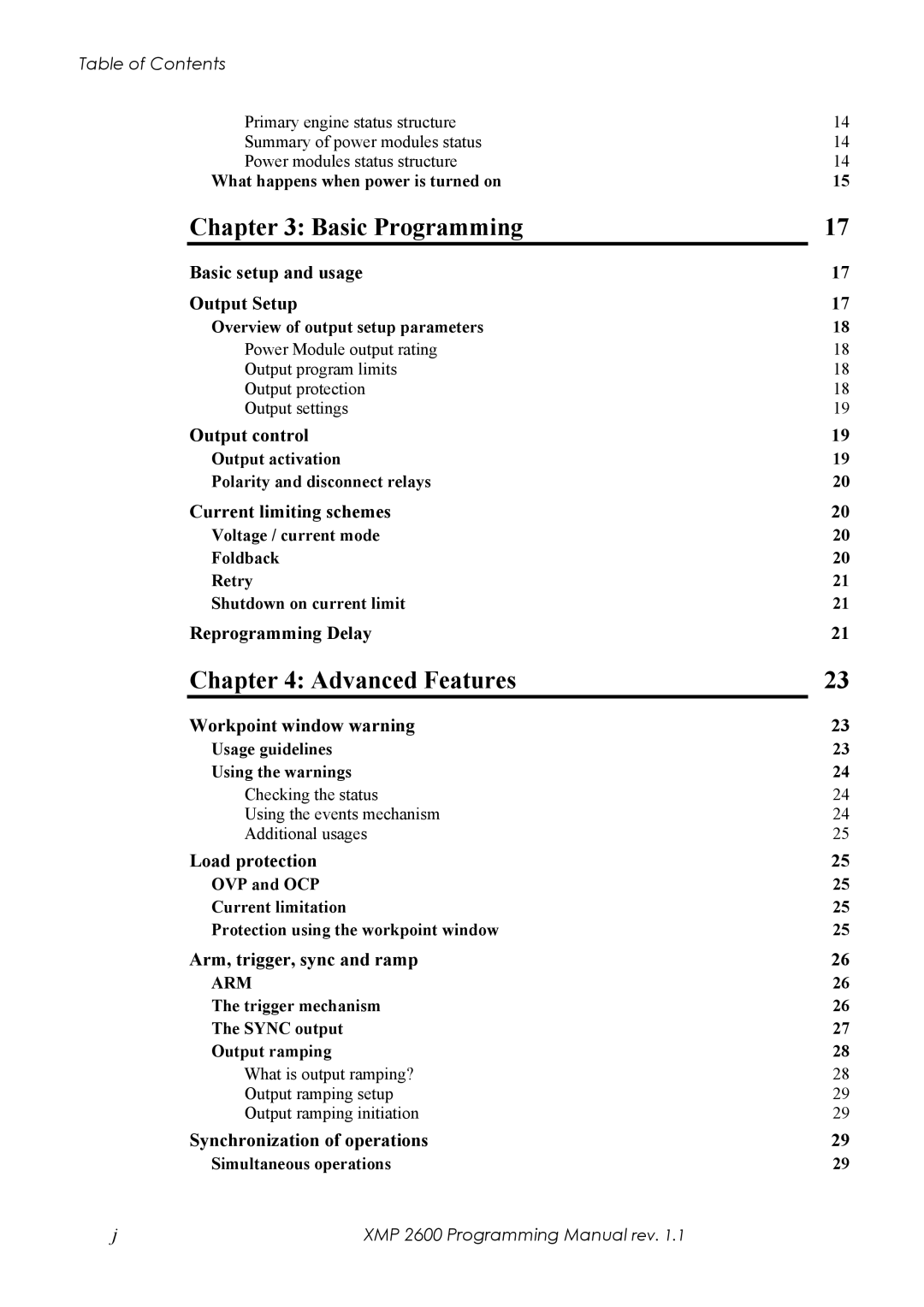Table of Contents |
| |
| Primary engine status structure | 14 |
| Summary of power modules status | 14 |
| Power modules status structure | 14 |
| What happens when power is turned on | 15 |
| Chapter 3: Basic Programming | 17 |
| Basic setup and usage | 17 |
| Output Setup | 17 |
| Overview of output setup parameters | 18 |
| Power Module output rating | 18 |
| Output program limits | 18 |
| Output protection | 18 |
| Output settings | 19 |
| Output control | 19 |
| Output activation | 19 |
| Polarity and disconnect relays | 20 |
| Current limiting schemes | 20 |
| Voltage / current mode | 20 |
| Foldback | 20 |
| Retry | 21 |
| Shutdown on current limit | 21 |
| Reprogramming Delay | 21 |
| Chapter 4: Advanced Features | 23 |
| Workpoint window warning | 23 |
| Usage guidelines | 23 |
| Using the warnings | 24 |
| Checking the status | 24 |
| Using the events mechanism | 24 |
| Additional usages | 25 |
| Load protection | 25 |
| OVP and OCP | 25 |
| Current limitation | 25 |
| Protection using the workpoint window | 25 |
| Arm, trigger, sync and ramp | 26 |
| ARM | 26 |
| The trigger mechanism | 26 |
| The SYNC output | 27 |
| Output ramping | 28 |
| What is output ramping? | 28 |
| Output ramping setup | 29 |
| Output ramping initiation | 29 |
| Synchronization of operations | 29 |
| Simultaneous operations | 29 |
j | XMP 2600 Programming Manual rev. 1.1 |
